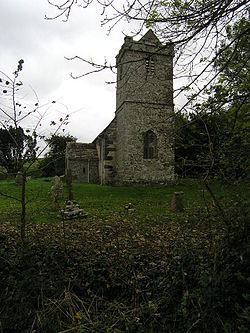Order Cistercian Designated date 26 June 1963 | Founder(s) Ralph de Kahaines Disestablished 1539 | |
 | ||
Full name The abbey of St Mary and All Saints Heritage designation Scheduled Monument 1002715 - ruinsGrade I listed building 1110840 - church | ||
Tarrant Abbey was an abbey in Tarrant Crawford, Dorset, England.
Contents
- Map of Tarrant Abbey Tarrant Crawford Blandford Forum DT11 9HU UK
- History
- Known Abbesses of Tarrant Abbey
- References
Map of Tarrant Abbey, Tarrant Crawford, Blandford Forum DT11 9HU, UK
History
The site was founded as an independent monastery in 1186 by Ralph de Kahaines (of nearby Tarrant Keyneston) and has been identified as a possible site of 'Camestrum', referred to by Gervase of Canterbury. The Abbey was then re-founded in either 1228 or 1233 as a Cistercian nunnery, later supposedly the richest in England.
Two famous people are associated with the abbey. The first is Queen Joan, the wife of Alexander II of Scotland and daughter of King John of England (Richard I's brother and successor) who is buried in the graveyard (supposedly in a golden coffin). The second is Bishop Richard Poore, builder of Salisbury Cathedral, who was baptised in the abbey church and later (in 1237) buried in the abbey, which he founded. He was at one time Dean of the old cathedral at Old Sarum, and later became bishop of first Chichester, then Salisbury and finally Durham.
St Mary the Virgin, Tarrant Crawford, the parish church of Tarrant Crawford, is all that remains of Tarrant Abbey. St. Mary's Church was the lay church of the Abbey and was built in the 12th century. It has now been designated as a Grade I listed building and is now in the care of the Churches Conservation Trust. The site of the Abbey is a Scheduled monument containing mostly buried remains.
